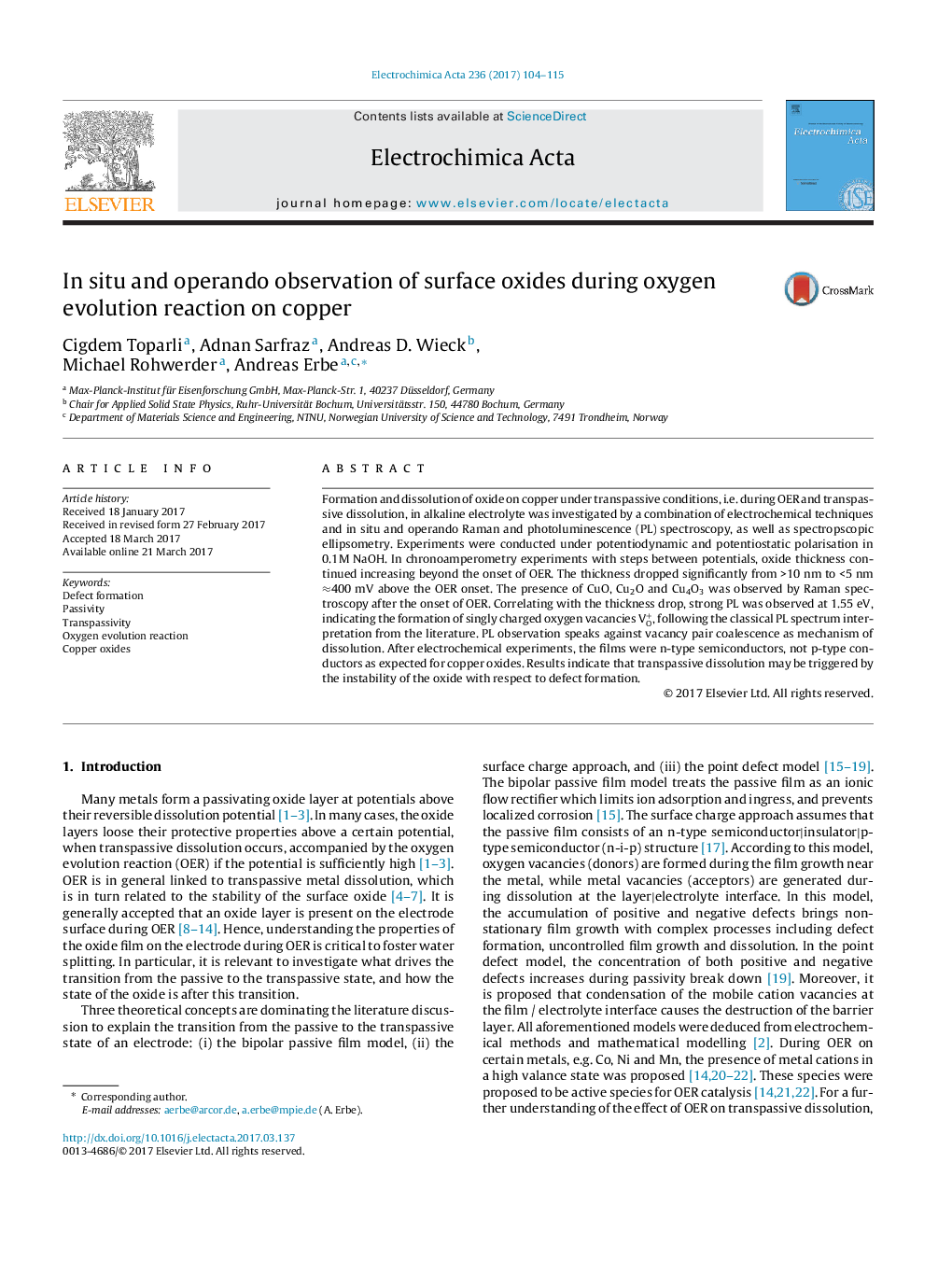| Article ID | Journal | Published Year | Pages | File Type |
|---|---|---|---|---|
| 4767234 | Electrochimica Acta | 2017 | 12 Pages |
â¢Spectroscopic ellipsometry and Raman spectroscopy used to study surfaces during OERâ¢Layer thickness decreases after start of oxygen evolutionâ¢Photoluminescence shows defect formation during running oxygen evolutionâ¢Oxide becomes unstable towards defect formation
Formation and dissolution of oxide on copper under transpassive conditions, i.e. during OER and transpassive dissolution, in alkaline electrolyte was investigated by a combination of electrochemical techniques and in situ and operando Raman and photoluminescence (PL) spectroscopy, as well as spectropscopic ellipsometry. Experiments were conducted under potentiodynamic and potentiostatic polarisation in 0.1M NaOH. In chronoamperometry experiments with steps between potentials, oxide thickness continued increasing beyond the onset of OER. The thickness dropped significantly from >10 nm to <5 nm â400 mV above the OER onset. The presence of CuO, Cu2O and Cu4O3 was observed by Raman spectroscopy after the onset of OER. Correlating with the thickness drop, strong PL was observed at 1.55 eV, indicating the formation of singly charged oxygen vacancies VO+, following the classical PL spectrum interpretation from the literature. PL observation speaks against vacancy pair coalescence as mechanism of dissolution. After electrochemical experiments, the films were n-type semiconductors, not p-type conductors as expected for copper oxides. Results indicate that transpassive dissolution may be triggered by the instability of the oxide with respect to defect formation.
Graphical abstractDownload high-res image (126KB)Download full-size image
